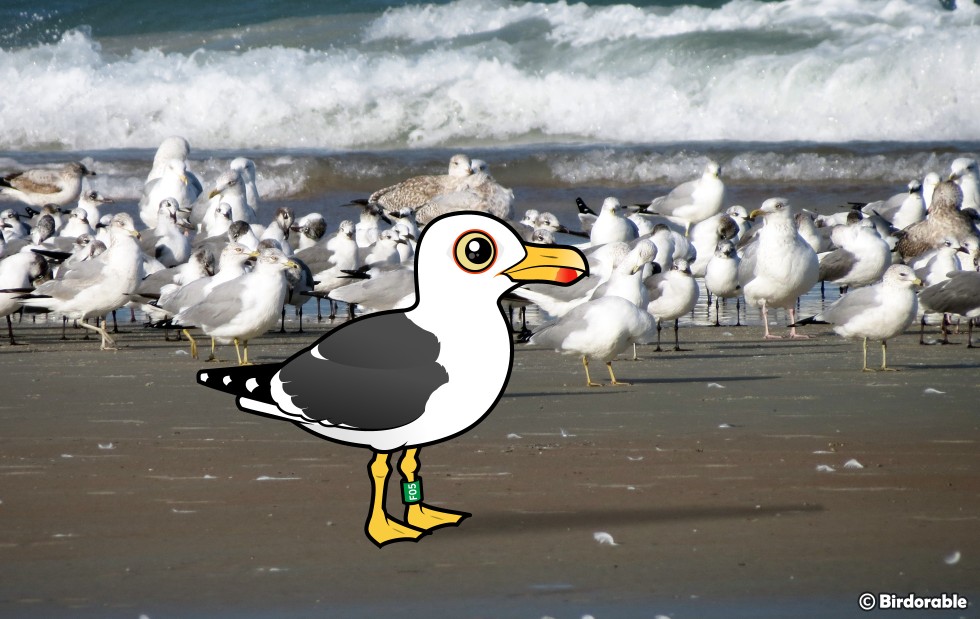Pierre the Lesser Black-backed Gull

Pierre at Daytona Beach Shores in Florida
We're celebrating the world's gulls this week! Join us as we highlight these social and intelligent birds. Today we'd like to tell you about a special individual bird.
Lesser Black-backed Gulls generally breed across northern parts of Europe and Asia. In the winter they move down across Europe and into parts of Africa, the Middle East, and southeast Asia. A portion of the population is also found wintering along the Atlantic coast of North America each year.
One exception to the rules is a particular Lesser Black-backed Gull who was first seen at a nest site on Appledore Island in Maine back in the spring of 2007. The Lesser Black-backed Gull (LBBG) was apparently tending a nest with a Herring Gull. This discovery was only the second time a LBBG was known to breed in North America, and a first record for the Atlantic coast.
During the following spring, both the LBBG and its Herring Gull mate were banded by Dr. Julie Ellis's scientific study team. The Lesser Black-backed Gull was given a green color band with the code F05. The pair returned to the nesting area again in 2009, when observation of the pair together revealed the LBBG to be a male bird.
In January of 2009, F05 was discovered wintering on the Atlantic coast of Florida in Daytona Beach Shores, which is not far from Birdorable Headquarters. This location is known for having the largest winter gathering of gulls in North America. Picking out F05 couldn't have been an easy task!

Lots of gulls on the beach at Daytona Beach Shores, Florida (photo by Amy Evenstad)
F05, also sometimes known by the name "Pierre", continued to be observed in Daytona Beach Shores the following winters. However, during the 2012 breeding season, F05 was not found at his normal nesting grounds. Gulls tend to be faithful to their nesting sites, so it was presumed that F05 had perhaps died. But the old gull was again found to be wintering in Daytona Beach Shores during the winter of 2012-2013. Where he spent the summer is a mystery. However, F05 returned to Appledore in the spring of 2014.

F05 in February 2013 (photo by Amy Evenstad)
This winter, F05 is again spending his time in Daytona Beach Shores. Time will tell if he again returns to Appledore in the spring for another nesting season. Lesser Black-backed Gulls start breeding at age four. Since he was first seen as an adult in 2007, F05 must be at least 12 years old as of the coming spring.

F05 in January 2015 (photo by Amy Evenstad)





Comments
Leave a comment
Thank you!